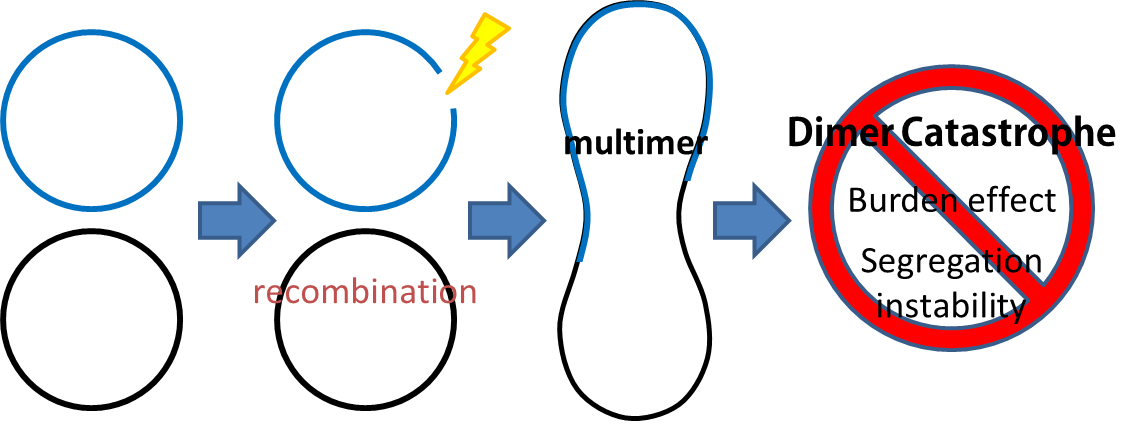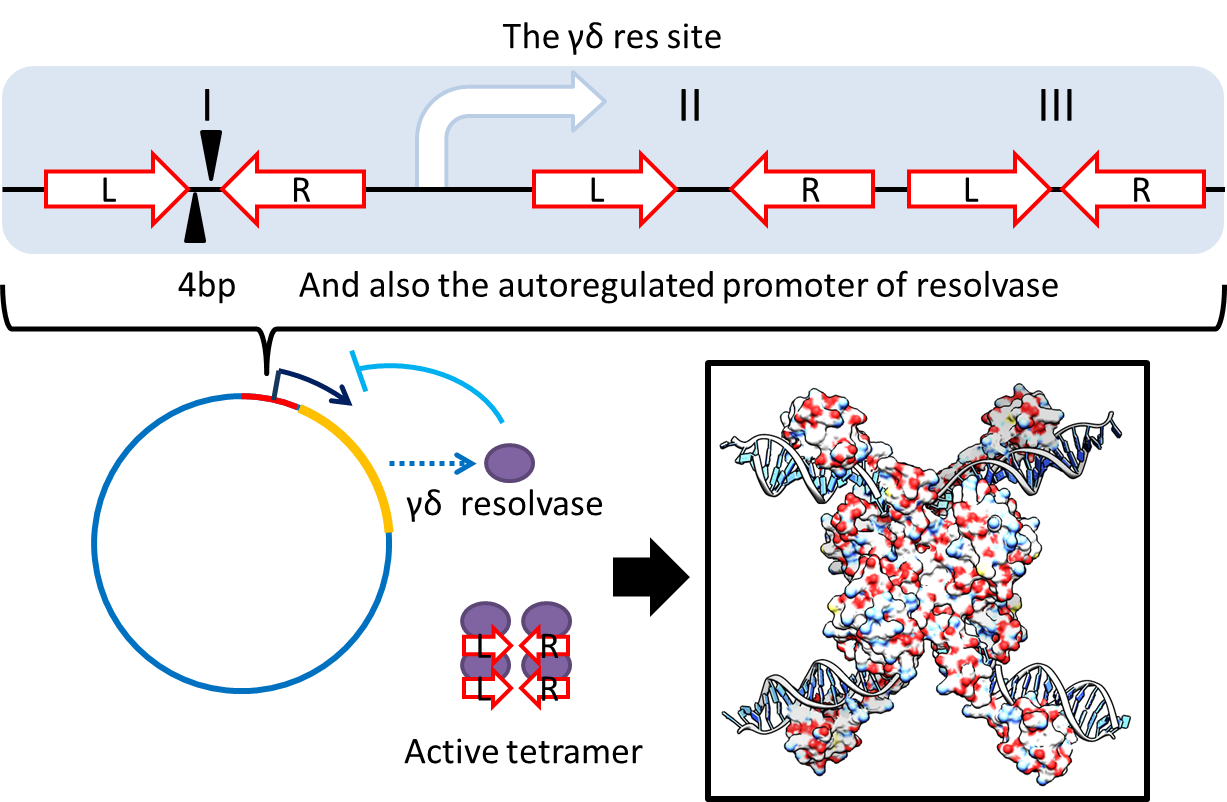Team:NTU-Taida/PEPDEX
From 2012.igem.org
(→Obstacles) |
|||
| Line 15: | Line 15: | ||
# Burden Effect <p>The plasmid free cells sure will grow better than those bearing plasmids because they don't have to spend energy/resources on our pepdEX system, so this growth rate difference will finally eliminate plasmid-bearing bacteria in population</p>[[File:NTU-Taida-Burden3.png|500px|center]] | # Burden Effect <p>The plasmid free cells sure will grow better than those bearing plasmids because they don't have to spend energy/resources on our pepdEX system, so this growth rate difference will finally eliminate plasmid-bearing bacteria in population</p>[[File:NTU-Taida-Burden3.png|500px|center]] | ||
# Dimer Catastrophe<p>Homologues recombination may cause plasmid multimers which will increases segregational instability and burden, this is the reason why most lab coli are recA1 mutants. But so that our coli must able to colonize gut, it should be recA+ wild type strain. That's the problem!</p>[[File:NTU-Taida-Mrs-1.png|500px|center]] | # Dimer Catastrophe<p>Homologues recombination may cause plasmid multimers which will increases segregational instability and burden, this is the reason why most lab coli are recA1 mutants. But so that our coli must able to colonize gut, it should be recA+ wild type strain. That's the problem!</p>[[File:NTU-Taida-Mrs-1.png|500px|center]] | ||
| + | |||
| + | ===Stabilization Modules=== | ||
| + | |||
| + | Multimer Resolution System:Tn1000(gamma delta) resolution system | ||
| + | |||
| + | [[FIle:NTU-Taida-Mrs-2.png|450px|thumb|right|structure of MRS]] | ||
| + | |||
| + | To deal with multimerization, we clone an cassette which encodes an autoregulated resolvase(serine type recombinase)from E.coli F plasmid transposon tn1000(tn3 family). Its promoter region consists of 3 sub-sites(res site) and can process recombination. This cassette can resolve multimer that formed during replicative transposition, so it can also resolve plasmid multimer providing plasmid stability by avoiding dimer catastrophe. For this reason, it is multimer resolution system(MRS) that provide analogous function as E.coli chromosome XerCD/dif but acts independent of cell cycle, DNA localization and may have higher efficiency on plasmids compared with slow XerCD system. | ||
| + | |||
{{:Team:NTU-Taida/Templates/ContentEnd}}{{:Team:NTU-Taida/Templates/Footer|ActiveNavbar=Project}} | {{:Team:NTU-Taida/Templates/ContentEnd}}{{:Team:NTU-Taida/Templates/Footer|ActiveNavbar=Project}} | ||
Revision as of 10:53, 25 September 2012
Circuit
The main circuit is designed to detect the presence of fatty acid in the intestinal environment and produce the peptide drug (GLP-1 in this case) and cell penetrating peptide (CPP) as response. There are two core systems: double repressors and quorum sensing.
Stability and Safety
Every GM system that will function outside lab will face two major problems:system stability and safety! Without selective pressure ,we have to deal with plasmid instability ; to make our coli colonized bowel we have to use recA+ strains which may cause plasmid multimer. Our GM coli will also contact with many kinds of bacteria at the risk of horizontal gene transfer.
The following segment is our struggle against these obstacles.
Contents |
Stability of Delivery System
Briefing
As our system will function outside the labrotory and human gut lack for antibiotic selection pressure, the vector stability is the critical point that determine whether our system is applicable or not. Inspired by natural plasmid & mobile gene element, we cope up with vector instability by incorporating partition system, Multimer resolution system and toxin antitoxin system these modules into our design.
Obstacles
Sources of plasmid instability:
- Segregational instability
Plasmids are unevenly distributed inside bacterium, after cell division, some progeny might loss plasmid.
- Burden Effect
The plasmid free cells sure will grow better than those bearing plasmids because they don't have to spend energy/resources on our pepdEX system, so this growth rate difference will finally eliminate plasmid-bearing bacteria in population
- Dimer Catastrophe
Homologues recombination may cause plasmid multimers which will increases segregational instability and burden, this is the reason why most lab coli are recA1 mutants. But so that our coli must able to colonize gut, it should be recA+ wild type strain. That's the problem!
Stabilization Modules
Multimer Resolution System:Tn1000(gamma delta) resolution system
To deal with multimerization, we clone an cassette which encodes an autoregulated resolvase(serine type recombinase)from E.coli F plasmid transposon tn1000(tn3 family). Its promoter region consists of 3 sub-sites(res site) and can process recombination. This cassette can resolve multimer that formed during replicative transposition, so it can also resolve plasmid multimer providing plasmid stability by avoiding dimer catastrophe. For this reason, it is multimer resolution system(MRS) that provide analogous function as E.coli chromosome XerCD/dif but acts independent of cell cycle, DNA localization and may have higher efficiency on plasmids compared with slow XerCD system.
 "
"





